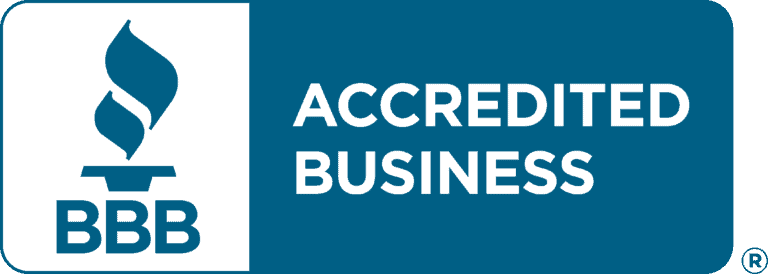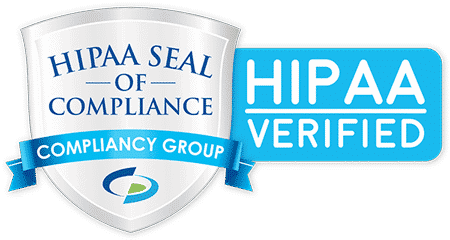2020 will be a particularly tricky year to file taxes. 2019 is the first year that all of the new rules from the Tax Cuts and Job Acts (TCJA) of 2017 take full effect, leaving a bunch of questions up in the air. Since most organizations are going to be learning how to sort through these changes, they may miss some of the new opportunities as well as ones that already exist.
Since it is hard to keep track of incentives when you don’t know what your company qualifies for, we prepared a general guide to remind you of the tax credits, deductions, and opportunities you should consider when preparing your 2020 business taxes. To make it easier for you, we’ve arranged the sections by the kinds of questions we would ask to help you find the opportunities that may apply to you.
Take a look below. If you see anything that resonates with you or your company, but you’re not sure what to do next, send us an email. Taking advantage of tax credits and deductions is a great first step when starting expense reduction and we can help you file for it.
Opportunities that may apply to you
- Did your company hire any veterans, formerly incarcerated individuals, or people with special needs?
- Did your business create anything unique?
- Did you make any improvements to buildings you own?
- Did you renovate any buildings?
- Did your business go green?
- Did your business make, extract, or export anything sold overseas?
- Did you pay too much in property taxes?
- Did you have any capital gains?
Did your company hire any veterans, formerly incarcerated individuals, or people with special needs? You may qualify for Work Opportunity Tax Credits (WOTC).
What they are:
Work opportunity tax credits are designed to encourage companies to hire targeted individuals who otherwise face significant barriers to employment. This includes transitioning military veterans, individuals with special needs or care requirements, and ex-felons returning to the community after prison.
How they work:
In general, businesses earn tax credits of 25% or 40% of the new employee’s first-year wages depending on their hours of work. This can account for $3,000 –$9,000 in extra savings per employee hired, per year. To claim the credit, an employer must identify a potential hire as an eligible member of one of the targeted groups on or before the day of the job offer.
Who they apply to:
The Work Opportunity Tax Credit is open to any tax paying company in the United States, U.S. Virgin Islands, and Puerto Rico.
Did your business create anything unique? You may qualify for Research and Innovation Credits (R&D).
What they are:
The Research and Development Tax Credit rewards companies for any kind of innovative contribution to the economy. It was created with the intent of advancing the tech workforce and opening up new job opportunities in the United States.
How they work:
If you have invested invested time, money, and/or resources into advancing the advancement of your company, a product, a service, or a software, you probably qualify. All you have to do is document your research and implementation activities and tie them all together.
Proof of documentation might include:
- Payroll records;
- Expense reports;
- Idea outlines;
- Meeting notes; or
- Any other representations that you might produce over the course of the year.
Who they apply to:
You don’t have to be a tech company to innovate or make contributions to the economy. This tax credit can apply to any forward-moving company, large or small, that is looking to internally expand and has great ideas about how to do so.
Did you make any improvements to buildings you own? You may want to consider a cost segregation study.
What it is:
Cost segregation is a lucrative tax strategy that is used to reclassify and shorten the depreciation time of commercial and commercial residential properties for tax purposes, reducing tax obligations.
In 2019, the IRS and the Treasury Department finalized new depreciation rules stemming from the Tax Cuts and Jobs Act (TCJA), which we wrote about earlier this year.
How it works:
To qualify for a shortened depreciation time, a construction engineer must come to your building and study its infrastructure. This includes walls, floors, ceilings, plumbing, electrical wiring, HVAC, etc. They will breakdown the costs and timeframes of upkeep and categorize each component into recovery periods ranging from 5 years to 39 years.
Due to this year’s improved tax treatment, different components can be allocated to shorter lives translating into immediate cash flow.
Who it applies to:
If you have purchased, constructed, expanded or remodeled a building since 1987, you qualify for a Cost Segregation Study and subsequently, cost depreciation.
Did you renovate any buildings this year? You may want to consider a disposition study.
What it is:
Disposition studies evaluate buildings that are undergoing extreme renovations or demolition for tax deductions on tangible assets. It is meant to help deduct expenses from problemed assets that need constant upkeep.
Because of improved depreciation laws this year, commercial property owners can now take a 100% tax deduction on qualified assets when being abandoned or disposed of in the current tax year.
How it works:
Like the cost segregation study, disposition studies require construction engineers to evaluate your property and determine whether or not the assets you are replacing are critical to the building’s function.
Who it applies to:
Owners of commercial buildings who are replacing, retrofitting, or disposing of lighting, HVAC equipment, and roofing systems or conducting heavy renovations on their commercial property qualify for a disposition study.
Did your business go green this year? You may qualify for 179D Energy Incentive & Certification and solar tax credits, depending on what you did.
What Section 179D is and how it works:
Section 179D of the Internal Revenue Code (IRC) is a tax incentive that rewards building owners, architects, contractors, and designers up to $1.80 per square foot of energy-efficient lighting, heating and cooling systems.
If a taxpayer is able to reduce their energy output by 50%, they qualify for IRC tax incentives. This measurement must be calculated with software that is approved by the Department of Energy and inspected in accordance with NREL Guidelines.
Who Section 179D applies to:
Owners of any building of any kind that utilize green strategies to reduce their carbon footprint, and can pass all of the government mandated tests, qualify for the incentive.
What the Solar Investment Tax Credit is, how it works, and who it applies to:
In addition to Section 179D, we pointed out earlier this year that the federal Solar Investment Tax Credit (ITC) is offering 30% off of the cost of solar panel equipment installation, with additional cash benefits. If you installed solar panels, you can reclaim some of that cost.
Did your business make, extract, or export anything sold overseas? You may qualify to form an IC-DISC.
What it is and who it applies to:
Interest Charge Domestic International Sales Corporation (IC-DISC) is a tax opportunity for businesses who make, extract, or distribute products and software outside of the United States. It has been around in its current state since 1984 and was created to encourage US businesses to sell outside the US. It is popular for reducing the taxes on export income.
How it works:
Business owners must form a tax-exempt IC-DISC, which has certain requirements that must be met to qualify and maintain. You can find more information about it on the IRS website.
Do you think you paid too much in property taxes? You may qualify for a Property Tax Assessment.
What it is:
Business owners pay property taxes to their local government to cover the cost of public amenities and services. Costs vary from location to location and are usually based on the value of your property. In some cases, this tax costs more than both sales and income taxes combined. By negotiating a fair and equitable tax assessment, you can immediately reduce expenses and increase cash flow.
How it works:
Talk to us! Our partners have testified and negotiated property tax reductions with local and state authorities throughout the country. We have assessed and renegotiated property taxes on hotels, manufacturing facilities, shopping malls, refineries, senior living facilities, office buildings, and apartment buildings.
Who it applies to:
If you think you’re paying too much in property taxes, this applies to you.
Did you have any capital gains? You may want to invest in Opportunity Zones.
What they are and who they apply to:
Qualified Opportunity Zones, created by the Tax Cuts and Jobs Act of 2017, are used to encourage investors to reinvest capital gains into distressed communities in exchange for tax benefits. They are designed to encourage economic development and job growth in areas typically overlooked or disadvantaged.
How they work:
When an investor sells an asset that generates a capital gain, the capital gains from that investment must be reinvested within 180 days into a designated Opportunity Zone. If the investment is held, the capital gains liability on the original investment becomes reduced by 10% after five years and by 15% after seven years. After ten years, the new capital gains taxes generated from the opportunity fund investment are reduced to zero.
You can learn more information about Qualified Opportunity Zones on the IRS website.
Preparing your 2020 business taxes
We hope this guide helps you identify opportunities to save on your taxes in 2020. If you went green, renovated, hired someone new, or created something new or unique, you could reduce the taxes you owe.
However, this guide doesn’t cover everything. If you would like assistance finding more ways to reduce your tax bill or want assistance taking advantage of the opportunities listed above, we’re here for you – just send an email. We provide all of the necessary engineering calculations and documentation required for your business to claim additional depreciation, negotiate tax reductions, and help you organize your evaluations.
Until then, We wish you the happiest of holidays. See you in the new year!






